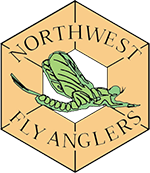Rattlesnake Lake (Host - Peter Rubenstein)
Rattlesnake Lake is spring-fed by the Cedar River and is located just a few miles south of North Bend. At an elevation of 915 feet, this 107 acre lake is surrounded by forests and is stocked with rainbow trout. A well-developed access area managed by Seattle Public Utilities lies on the east shore and has ample parking, toilets and a small gravel boat ramp. Two-pole fishing is allowed. Anglers are permitted to use electric motors for propulsion.
With all the natural beauty in the area, it might surprise you to know that this is not a natural lake. When the Cedar River, to the south, was dammed to create Chester Morse Lake, the City of Seattle’s water supply, seepage from the rising waters filled the basin that is now Rattlesnake Lake. The lake water has perfectly preserved many old growth stumps from previous logging and they are very visible as you row around the lake.
Note: The water level of the lake fluctuates significantly during the summer months depending on the accumulated snowpack in the mountains. Rattlesnake Lake is still supplied from seepage from Chester Morse and will drastically change in volume and acreage as reservoir levels change.
Driving Instructions, From Seattle
- East on I-90 to Exit #32, 436th Ave. SE
- Turn right on 436th Ave. SE and follow the road for ~3.5 miles right to the lake.
What to Bring:
- Washington state fishing license
- Raft, canoe, pontoon boat, kayak, or float tube
- PFD is always recommended for wading and riding in boats.
- 4-6 weight rods with floating line and/or sinking line
- 3x, 4x, and maybe 5x tippet, depending on which flies you use
- Net
- Folding Chair
- Rain gear
- Hat and sunglasses
- Camera (in a zip lock bag)
Flies
- Black wooly buggers, olive damsels, carey specials and leaches, trolled near the surface and at depth have been super successful, at times.
- When there is a hatch, elk hair caddis and parachute adams have resulted in outstanding catch rates.


